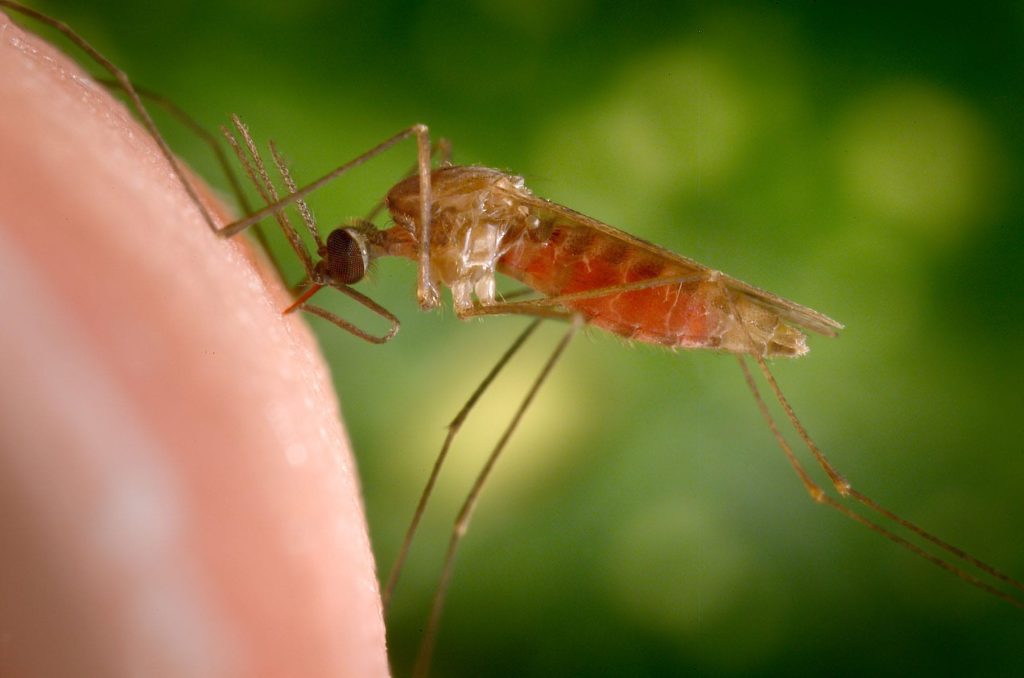Nairobi, Kenya – A deadly mosquito species, known for its potential to spread life-threatening diseases, has been detected in Kenya, raising serious concerns among health authorities. The species, Anopheles stephensi, originally native to South Asia and the Middle East, is capable of transmitting both malaria and other viral infections, posing a significant threat to public health.
What is Anopheles stephensi?
Anopheles stephensi is a highly adaptive mosquito species that thrives in both urban and rural settings. Unlike other malaria-transmitting mosquitoes typically found in tropical regions, this species is capable of breeding in a wide range of environments, including man-made water storage containers, making it particularly challenging to control.
Dr. Patrick Amoth, Director General of Health at Kenya’s Ministry of Health, described the mosquito’s presence in Kenya as alarming. “We are working closely with health organizations and researchers to understand the extent of its spread and to take immediate action to prevent outbreaks,” he said.
Spread and Threat
The mosquito was first detected in parts of East Africa in 2019, with reports indicating its rapid spread across the region. Its discovery in Kenya marks the latest in a series of findings that highlight the species’ ability to adapt to new environments. Health experts are particularly concerned because Anopheles stephensi has been linked to urban malaria outbreaks in places like Djibouti and Ethiopia.
Unlike other malaria-transmitting mosquitoes in Africa, which are often found in rural areas, Anopheles stephensi can thrive in densely populated cities, where it can spread diseases rapidly. This poses a new challenge for urban areas that are less equipped to handle malaria outbreaks than rural regions traditionally affected by the disease.
Potential Public Health Impact
The presence of Anopheles stephensi in Kenya could lead to an increase in malaria cases, particularly in urban centers where the disease has historically been less prevalent. The World Health Organization (WHO) has warned that the species has the potential to change the face of malaria transmission on the continent, where 90% of global malaria cases occur.
Kenya’s public health officials are now urging citizens to take extra precautions, especially in urban areas, by using insecticide-treated bed nets, removing stagnant water, and ensuring proper sanitation.
Dr. Rose Njeri, an entomologist at the Kenya Medical Research Institute (KEMRI), emphasized that “we need to intensify vector control measures and public awareness campaigns, particularly in high-density urban areas, to prevent this species from becoming a dominant transmitter of malaria and other diseases.”
Government Response and Action
The Kenyan government is working in collaboration with international health organizations, including the WHO and the Centers for Disease Control and Prevention (CDC), to monitor the spread of the mosquito and develop effective containment strategies. This includes enhancing surveillance systems, conducting research to map the mosquito’s spread, and increasing public health campaigns aimed at reducing mosquito breeding sites.
Health officials are also mobilizing resources to ensure that diagnostic tools, treatment facilities, and preventive measures such as insecticides are readily available. In light of the COVID-19 pandemic, the government is urging healthcare facilities to be vigilant for both malaria and viral disease cases that could be transmitted by Anopheles stephensi.
Urban Malaria and Potential Outbreaks
Malaria has traditionally been considered a rural disease in Africa, with urban areas seeing significantly fewer cases due to different environmental conditions. However, the ability of Anopheles stephensi to thrive in urban settings could lead to a shift in this pattern, sparking concerns about urban malaria outbreaks in cities such as Nairobi, Mombasa, and Kisumu.
Experts say that urban malaria outbreaks could strain health systems that are already struggling with other infectious diseases and ongoing recovery efforts from the COVID-19 pandemic.
Next Steps and Long-Term Impact
In response to the detection of Anopheles stephensi in Kenya, researchers and health authorities are focusing on improving mosquito control measures and urban planning to limit the species’ breeding sites. There are also calls for increased funding and research into vaccines and treatments that could mitigate the effects of potential outbreaks.
While it is too early to predict the full impact of the mosquito’s arrival in Kenya, experts agree that swift action is needed to prevent a surge in malaria cases and other mosquito-borne diseases.
Conclusion
The discovery of Anopheles stephensi in Kenya signals a new public health threat, particularly for urban areas that have previously been less vulnerable to malaria. With the species’ ability to spread diseases in densely populated regions, health officials are calling for immediate preventive measures and stronger surveillance to mitigate the risk of outbreaks. As Kenya grapples with this new challenge, the government and international health partners are racing against time to protect the population from this dangerous mosquito and the diseases it carries.























